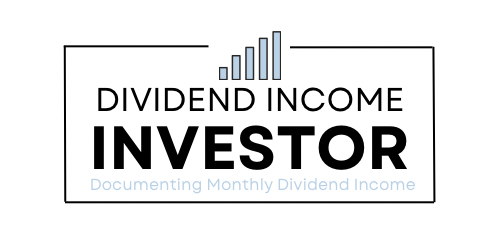For the past 3 years now I have been publishing my financial goals to improve my financial situation. It seems to be paying off.
I’ve created a dividend income portfolio that pays me over $510.00 annually, and I have reduced my student loan to less than $6,500. I’m finally getting close to paying that f@$*er off now!
Based on the progress made, and if I can maintain any rate of incremental improvement, I will be in a very good financial situation in 10 years.
If I can keep my expenses low, be debt free, and if I can generate thousands in dividend income per year, it will improve my options tremendously. That’s what financial independence is all about—flexibility and options.
Financial Strategy in 2019
I have attempted to keep the financial goals for 2019 as simple as possible. They are focussed on dividend income and on paying off my student loan.
To be completely upfront, I am beginning to get a little ticked off at my student loan. I mean, they’ve been taking payments for long enough now. So I’ve decided to make that more of a priority this year, especially considering that it’s low enough to pay off soon.
However, I will be maintaining my dividend income investment strategy by saving a minimum of 10% and by paying myself first.
There’s a lot of discussion around paying off debt before investing. But I believe saving money is a habit, and I think a minimum of 10% of any income earned should be set aside before the rest is touched. That way it ensures that money is available in case of an emergency, and it will provide capital to acquire assets that pay income. Of course, some situations are different. For example, if you have a strong support system that could help with shelter or finances during an emergency, then it makes sense to pay off debt first. But if you are more independent, you have to be prepared on your own. That’s my perspective.
Furthermore, I can’t stop investing now with the stock market in its current state. Stocks are finally on sale! I’m sorry to those that are closer to retirement than I am, but I hope this market lasts for a year or two so I can take advantage of lower prices. Even though I’m a dividend investor, I am still a value investor first based on Ben Graham’s rules from The Intelligent Investor.
Here are my financial goals for 2019:
Reach $800 to $1,000 in Forward Annual Dividend Income
The great part about documenting your dividend income online for 2 years is that you create benchmarks.
Considering that dividend income is projected to be at least $510.85 in 2019, I can analyze last year’s performance to understand how much dividend income increased since the January 2018 projection.
Based on the $280 increase since the beginning of 2018 ($228.89 to $510.85), it’s safe to assume that dividend income will increase by $300 over the next 12 months. If that’s the case, forward dividend income for 2020 would be approximately $810. I’d be happy with that. However, I am setting $1,000 as the stretch target because 4 digits would be a milestone. It’s not that far out of reach either.
Earn $670 from dividends by December 2019.
Similar to how I can base goals off historical performance with dividend projections, I can do the same with dividend income received.
So if I have earned roughly $160 more in dividend income than what was projected in January 2018, I expect to earn at least $160 more than what is projected now.
Based on the $510 that was reported in the recent projection, I expect to earn at least $670 from dividends in 2019.
I feel as though this is a very fair estimate and will be easily achieved.
Save at least $6,000
Of course, the dividend business will not move forward unless I provide more capital to it. Well, I guess it would by at least $510 per year with dividends reinvested. But that’s not enough to reach the goals I’m setting here.
In turn, I’ll have to continue to save more money. And this is something that I can improve upon each year too.
Since I increased my year over year savings in 2018, I’m planning to save more money again in 2019.
In total, I saved just over $5,500 in 2018. It’s really not a lot of money in the grand scheme of things. But in case you haven’t noticed, this blog is about forming long term plans and creating processes.
I have been experimenting with different savings rates over the past few years and have settled on a rate that provides a comfortable lifestyle for myself.
I could cut some of the things I enjoy out of my life, or I could start lowering the grocery budget, but I’m just not willing to cut out things that truly add value to life.
In short, my savings strategy is simple—save more each year, and be consistent with a rate you are comfortable with.
Reduce Student loan to $3,500 or less.
The plan is to eliminate my student loan completely by the end of 2020. It should be by the end of this year, to tell you the truth.
Nevertheless, my student loan is hovering around $6,400 at the moment. That’s down from $8,862.52 at the end of 2017.
As mentioned in the introduction of this post, the student loan is beginning to feel like a real nuisance. It’s cash flow that could be freed up to invest in the current market.
However, I believe that building quality habits and being consistent with a strategy over the long term will pay off.
I know that this debt will be paid off within two years or less. That’s for sure. The lower it gets, the more I’ll be tempted to throw extra payments at it.

3 more financial goals worth noting.
In addition to the 4 main financial goals above, there are a few more areas of focus that are worth noting.
I am aiming to build up the U.S. side of the portfolio, because it’s small in comparison to the Canadian side as of right now. The main problem has been the exchange rate from CAD to USD over the past few years. At a certain point, though, it’s hard to avoid some of the quality equities that the U.S. market offers.
I also plan to increase exposure in the technology sector. As of right now, my portfolio is heavily weighted with financial services and utilities companies.
Because I believe software and technology is how businesses will advance going forward, I think it’s important to include some of these forward thinking equities in every portfolio. I just don’t see how any business can aim to be number one in their industry without the best software nowadays.
Moreover, I plan to cut back on trading fees to maximize returns.
Considering that the effortless returns of the bull market seem to be coming to an end, it could be an ideal time to rebalance the portfolio. In my case, it’s a chance for me to preserve as much capital as possible by reducing trading fees.
Financial Goals for 2019 – Concluding Thoughts
I realize that I’m not going to reach financial independence in 10 years by saving $6,000 annually. And that’s not even considering the cash I need to save on the side if I ever want to purchase a house.
However, I am certain that consistent savings and annual improvement of savings will compound over time. That along with the dividend income will eventually add up. Plus debt will be eliminated within 2 years, and there’s potential to increase income. As long as I can continue to increase the amount of capital I have to invest, I will be doing fine. I’m good at allocating it once I have it based on my average returns since 2012.
In conclusion, I set 4 simple and straight forward financial goals for 2019. The goals are measurable and build on the progress made over the past 2 years. If I follow this plan and remember that I am working on part of a longer term plan, I know that the portfolio will be generating $800 annually at the very least, and I’ll be 1 year away from being debt free.
Best of luck with your financial goals in 2019!


 Dividend Income Projection for December 2018 – $510.85
Dividend Income Projection for December 2018 – $510.85
